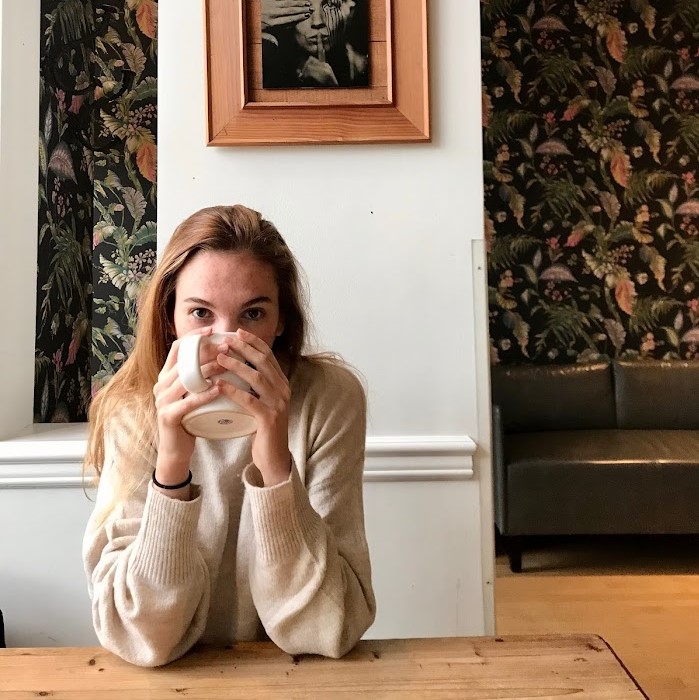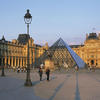More about Et in Arcadia ego
- All
- Info
- Shop

Contributor
People have a lot of opinions surrounding Et in Arcadia, also known as The Shepherds of Arcadia, by the French Baroque Artist Nicolas Poussin.
Does this painting symbolize death, beauty, Pandora’s box, or is it simply a painting of three dudes just chilling in a serene landscape? Poussin completed two versions of this painting, and this one can be found in Beyonce’s new digs, The Louvre. In this painting, two men point at what appears to be a tomb which declares, "I, too, lived in Arcadia” in Latin. A classic example of a memento mori, this painting embodies the reminder that death is an ever-present constant.
Born in France, Poussin left for Rome at an early age to study the works of Italian Renaissance Masters, Titian and Raphael. In Rome during the time of the Baroque era, Poussin rebelled against the conventional themes set by Baroque artists such as Caravaggio, and instead focused on ideals and styles of classical painting. Mr. Fancy Pants developed his own theories as to what one needed to make a beautiful painting; he believed that the subject-matter must be grand (ie. men at war, men doing heroic things, or Gods and Goddesses representing the Divine); he thought that genre-like details should be eschewed in favor of the magnificent; and he posited that beauty cannot be achieved without careful arrangement, position, and form. How high is that high horse, Poussin? In all seriousness, Poussin’s paintings draw on rational order and stability depicting ideals of harmony and beauty, rejecting the emotional aspects of the Baroque in anticipation of the serene neo-classical.
Arcadia is a term used since the poets of the 3rd century B.C. to describe a fictional earthly paradise in Southern Greece that has been celebrated as a type of utopia. So no, not the town in Southern California. At the time of this painting's creation, Arcadia was often referenced by the educated elite of the 17th century as a land where shepherds guarded their flocks during the summer. To further glorify these shepherds, it was assumed that they had time on their hands to play their flutes and write love poems. Ha, as if. It seems romantics have always thought shepherds led these leisurely, glorious lives. Did anyone think to even shadow one of these shepherds throughout the centuries? Of course not.
As the three shepherds observe the tomb which reads “I, too, lived in Arcadia,” a stoic classical figure of a woman who has been viewed as the spirit of death, stands over the three men with one hand on one of the men’s shoulders as to signify that he too will die. It seems that we the viewer enter the scene the second these three men grasp the idea that all men must die. The phrase "Et in Arcadia Ego" has also been interpreted to mean "Even in Arcadia, here am I" a slightly different take on the pervasiveness of death even in paradise. Either way, Poussin intentionally reminds the viewer of their own demise and how life will always go on, but death will always be present. Whoa, deep. Poussin was known for inserting a moral or philosophical message into his artwork, thus paving the way for all those black turtleneck wearing poets you see at your neighborhood coffee house today.
Sources
- Bonfante-Warren, Alexandra. The Louvre. Southport, CT: Hugh Lauter Levin Associates, 2000.
- Beckett, Wendy, and Patricia Wright. The Story of Painting. New York: Dorling Kindersley, 2000, p.216-218.
- Gardner, Helen, and Fred S. Kleiner. Gardners Art through the Ages: A Global History. Boston, MA: Thomson/Wadsworth, 2009, p.291-293.
- Sprinson de Jesús, Mary. “Nicolas Poussin (1594–1665).” In Heilbrunn Timeline of Art History. New York: The Metropolitan Museum of Art, 2000–. http://www.metmuseum.org/toah/hd/pous/hd_pous.htm (October 2003)
- Frances Gage, in French Paintings of the Fifteenth through the Eighteenth Century, The Collections of the National Gallery of Art Systematic Catalogue, Washington, D.C., (2009: 373-374.)













